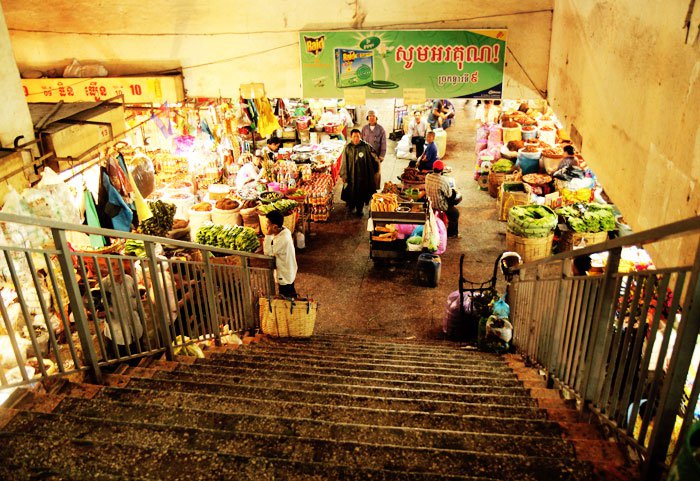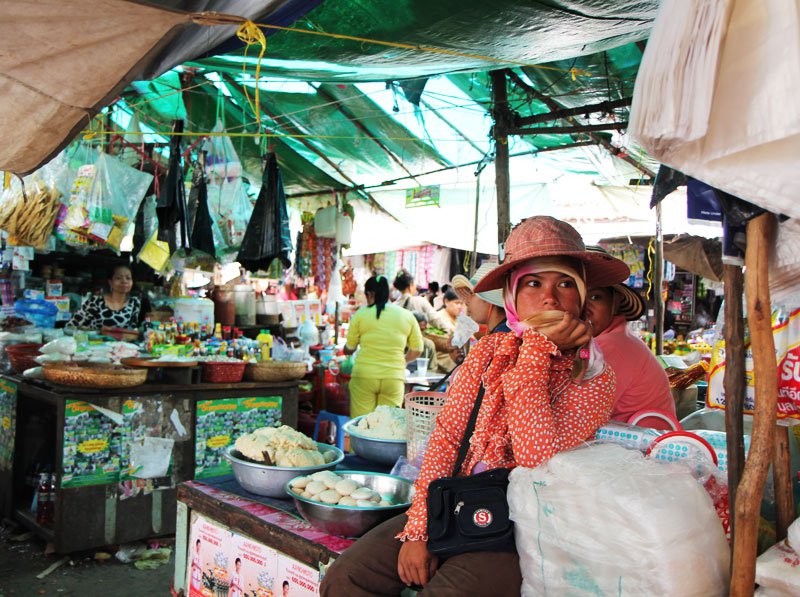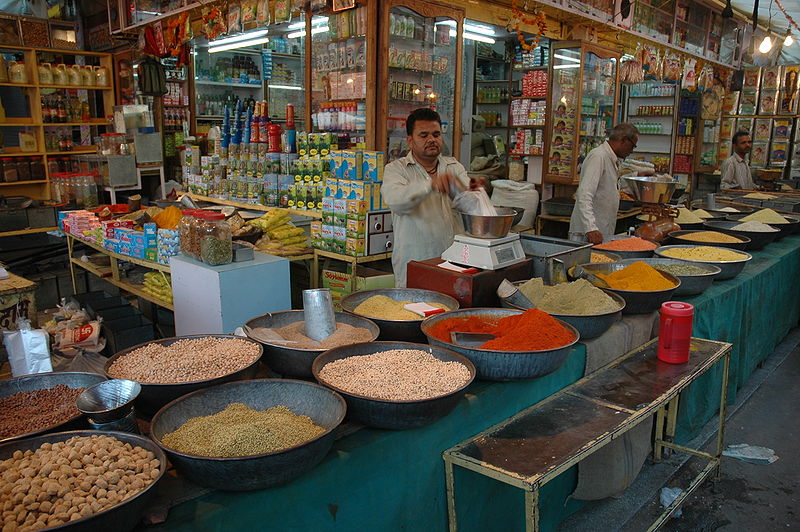Tracking the Promise of Financial Inclusion
11:00 to 12:30 CST: Speakers in this plenary session explored cases where MFIs and government agencies have achieved financial inclusion and poverty reduction for their clients, and where they’ve fallen short.
The discussion emphasized how microfinance and financial inclusion are affected by what happens at the local level, and the importance of incorporating traditional, local knowledge and business practices. Of particular interest to the group was the importance of gathering information at the local level, using local or grass-roots methodologies.
Panelists also pointed out the benefits of scale, efficiency and standardization offered by national and financial institutions. The consensus appears to be that top-down (large scale financial institutions) and bottom-up (local experience) approaches to financial inclusion are not contradictory but rather synergistic.
Also discussed were the best means of measuring the success of microfinance and financial inclusion through social impact measurement (SPM) tools. Panelists emphasized that using standardized methods of gathering data at the national and local levels is key to assessing how successful government agencies and financial service providers have been in achieving their common goals of poverty alleviation and financial inclusion.
First to speak was Ms. Elizabeth Larson, Results Measurement Advisor at the Pacific Financial Inclusion Programme (PFIP), which is jointly run by UNDP and UNCDF. Larson, who identified herself as a “data nerd,” described how PFIP incorporates financial inclusion data into its operations – and how far her organization has come in “tracking the promise” of these techniques.
“The microfinance of a decade ago has blossomed into this complex beast we now know as financial inclusion,” said Ms. Larson, describing the growth of MIX Markets from its origin at UNCDF. Now, it has over 2,000 MFIs in a “vastly improved” platform for performing analytics.
“MIX strives to remain relevant in the sector by creating innovative data products,” said Ms. Larson, a tactic that others have turned to across the industry. Examples Larson cited include the MFIN Micrometer which looks at state-level growth for MFIs in India, PMN’s MicroWatch which hosts district level maps of Pakistan which users can interact with, and the World Bank’s Global Findex, the world’s first data bank on financial inclusion.
Data in the sector is becoming increasingly easy to access, and much of it is downloadable, allowing users to interact with it themselves. Data is also becoming more frequent and timely, said Ms. Larson, with many nations publishing their findings soon after each quarter’s end.
She then described the Pacific Islands Working Group, which exists within the Alliance for Financial Inclusion infrastructure. The Group works with a region specific data set based on the AFI Core set, and in its efforts has collected country-level data and published the resulting indicator findings. Their core-plus indicators include data sets on key priorities for the region, data which is enhanced by that which is collected by regional banks.
Fiji presents a good example, said Ms. Larson, describing what occurred after the island nation incorporated its own financial inclusion strategy via the national reserve bank, and began analyzing its data. Fiji found financial inclusion is improving among many lines, with access to services like ATMs more than doubling in recent years – although credit card usage has not increased, indicating persistent barriers to access. The data will hopefully, said Larson, help policy makers “measure their own success.”
What’s the next level for data? “Make geographic data the new norm,” said Ms. Larson, calling for more granular data at the district level – moving it from a fringe set to a core set. There’s also a need for universally agreed upon benchmarks, she said. “Having indicators is one thing, but analyzing indicators is another ballgame.”
Larson also called for normalizing usage data, as well as increased costing analysis, helping institutions understand which products are profitable and which are not, “alleviating the mystery around this area.”
In addition, there is the work of unpacking market segmentation, said Ms.Larson, creating more useful data for how users actually behave, as well as creating standards for high outreach products.
Finally, on the policy side, Ms. Larson called for the greater understanding of microfinance use cases.
Next to speak was Mr. Royston Braganza, the CEO of Grameen Capital India. Mr. Braganza in his talk first described the “three Ps”: a paradigm shift from microfinance to microcredit in financial inclusion first, followed by the promise of financial inclusion second, and finished by the so-called “proof of the pudding.”
Mr. Braganza described financial inclusion in the Indian context. India’s huge unbanked population of 145 million households as both its greatest challenge and its greatest opportunity, according to Mr. Braganza. The Indian Prime Minister will soon announce the India Financial Inclusion Mission, he said, which will seek to bring bank accounts and credit to these millions of excluded people.
A major challenge to the Indian sector has been the Andhra Pradesh microfinance crisis, a crisis which Mr. Braganza said he viewed “through the lens of financial inclusion” as an effort to identify what really caused the crunch. “The jury is out as to what was really the trigger point,” he said.
Mr. Braganza felt that the cause of the microfinance crisis is simple: the sector in India was relying too much on the commercial leg of microfinance, ignoring the equally-matched social leg. Investors were more concerned with the number of clients and the size of the portfolio, leading the sector to focus more on the commercial leg- assuming the social leg was well looked after, he said.”The way I see it is that not one is more important than the other,” he said. “You can track both with equal rigor. If you do not track the promise, you don’t get it done.”
He praised the idea of AMF 2014 as a vehicle for celebrating the success of the social microfinance side, which he noted is at times under-appreciated. Mr. Braganza also described Grameen’s efforts to generate so-called “capital with a conscience.”
Finally, Mr. Braganza described the Grameen Foundation’s PPI Index, which helps institutions to measure concentration, scale, penetration, and the regional poverty rate amidst their client base. “You can really look at this at a granular level – is my microfinance institution really making a difference to the poor, or am I just calling myself a MFI?” explained Braganza.
Mr. Braganza gave the example of the Grameen Karnataka Report, and its poverty tracking efforts through Grameen Koota, a organization in Bangalore, India. He also described the Cashpor MFI in Bihar, India, a measurement that looked at how the MFI’s client selection efforts function in practice. “The ability to move the needle of client protection criteria to focus more on the poor – this brings the promise to the poor that they set out to achieve,” he said.
In closing, Mr. Braganza said, “We can help bring the poor out of poverty by helping them harness their potential – if we don’t track the promise, we can never taste the fruit.”
Third to speak was Mr. Karmul Hasan Tarafder, the President and CEO of the Asa Philippines Foundation. Mr. Tarafder said that ASA Philippines began in 2004 as a start-up and has grown considerably since its inception, now serving over 759,850 clients with 586 branches, covering 81 provinces. Among other advances, ASA Phillippines now offers free death benefits for all borrowers and one family member, hospitalization schemes, and scholarship programs for borrowers’ children for four years of college education, and an offer to join ASA Philippines themselves when they enter adulthood.
The Philippines has one of the best MFI market practices in the world, per the Economist Intelligence Unit, said Mr. Tarafder, who then described Bangko Sentral ng Pilipinas’ commitment to the Maya Deceleration.
What are the particular challenges MFI institutions must address in the Philippines? “The Philippines is a very complex geographical context,” said Mr. Tarafder, describing its many islands, diverse and often hard-to-access terrain, and widely divergent socioeconomic conditions. For all these challenges, he felt that financial inclusion works fairly well, with a diverse selection of service providers and access points.
How does ASA Philippines track its commitment? “Focusing on the core services, with clients first – I believe this is the primary source of our business,” said Mr. Tarafder, who placed high value on client feedback. In his view, a NGO must “be with your client” (BWYC) – and that financial services are not enough, either. These services must be accompanied by other basics, such as water, education , sanitation, and green energy. Finally, ASA Philippines periodically assesses its own impact on the poverty threshold, income levels, and other key socioeconomic indicators.
“The vision of organizations is especially important,” Mr. Tarafder said, describing how ASA Philippines strong vision has been paramount in helping it come to its current point.
Mr. Tarafder placed a strong emphasis on good human resources, as well as capitalizing on the strong trust and confidence of its clients. “We deliver the service they want, not the service want to deliver to them,” he said.
Mr. Tarafder also called for transparency, and better understanding clients’ “happiness with us.” Clients, he said, have various ways of communicating with both the organization and himself. Partnership also is an important matter to ASA Philippines, which has worked with others on efforts such as its health program.
“You created this organization. We are grateful to you,” said Mr. Tarafder in closing, addressing his clients.
Last to speak was Mr. Alok Prasad, CEO of the Microfinance Institutions Network (MFIN), who stressed the importance of high quality data and analysis – which can be translated into wisdom, “which we typically never get” about what microfinance does and how it accomplishes its goals.
Mr. Prasad described data, research, and studies as integral to his work with MFIN, but also stressed his concerns with data and its relationship to public policy – and what can happen when the system lacks data and concrete information. “The absence of high quality data ends up with policies and rules and so on being made that are not based on reality,” he said.
“What is the total number of self help groups still operating in India?” asked Mr. Prasad – observing that while many guess, no solid data exists to truly answer the question. “Real story, real numbers, real impact….none of it, because of lack of data.”
“Through this journey, this process, we should ensure we have high quality data, high quality information, and therefore knowledge,” said Mr. Prasad, describing his work with MIX Markets to produce the MicroMeter data set, as well as MicroScape. “We are working with partners, and we believe partnerships are the way to do things well.”
Finally, Mr. Prasad described MFIN’s new recognition as a self-regulatory organization for the industry, and how data collection is central to this process. “Some wise old man said, ‘knowledge is power’. What we are working towards is to truly empower the lives of the poor, and for that, all we need is more information.”
In a final series of questions, Mr. Braganza described the role of the coach as “extremely critical,” describing the need for someone to “pull it all together” – an effort in which he congratulated MFIN’s new status as a SRO.
“The ability to read the signs of the times, and more importantly predict the signs of the times, is critical,” said Mr. Braganza, describing how data allows the sector to observe the trajectory of its actions. “The role of the coach may not be one institution, but all of us together creating a think-tank to drive the work of empowering the poor,” he said.
On the topic of over-indebtedness, Mr. Tarafder described how ASA Philippines tracks its data every six months, and more often in the case of disasters, such as last year’s super-typhoon, Haiyan. “I was there on the next day and it was an agonizing time to go there,” he said. “We did the assessment and got branches to bring data to us.”
“We have undertaken development activities that have cost us $108 million… to show our heart is really with the poor,” said Mr. Tarafder, describing as well the free death benefits that his organization provided to those who died in the disaster.
How does PFIP foster the creation of data? Ms. Larson described the creation of financial inclusion groups in each nation which regularly gather to discuss the issues, accompanied by relevant subgroups, such as that which exists in Fiji. “It’s not that PFIP itself tries to promote a specific agenda in any country, but we create the mechanisms so countries themselves can survive, and when appropriate, provide them with support systems.”
The panel was moderated by Mr. Amarnath Samrapally, the lead analyst at MIX. Speakers at the panel were Ms. Elizabeth Larson, Results Measurement Advisor at the Pacific Financial Inclusion Programme (PFIP), Mr. Alok Prasad, CEO of the Microfinance Institutions Network (MFIN), Mr. Royston Braganza, CEO of Grameen Capital India, and Mr. Karmul Hasan Tarafder, President & CEO of ASA Philippines Foundation.
This session was facilitated by MIX. MIX provides financial service providers, policy makers, regulators, and other development professionals interactive data tools and visualizations that help identify problems and devise solutions for increasing financial inclusion.







